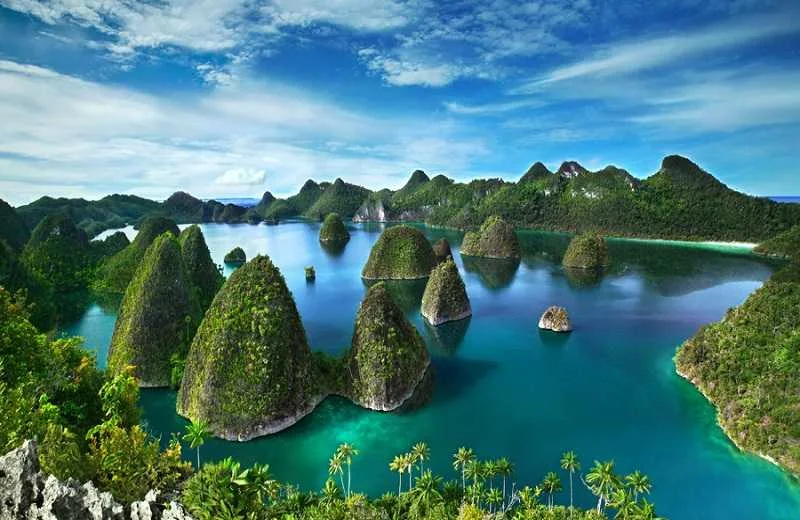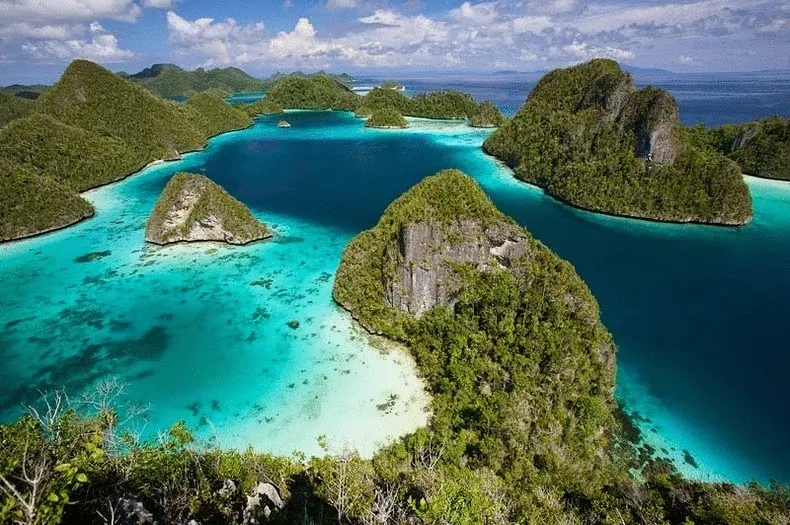Raja Ampat Islands, or the Four Kings, is an archipelago of over 1,500 small islands, reefs and shallow waters at the northwestern tip of the Bird's Head Peninsula in New Guinea. It is located on the northeast coast of the Indonesian province of West Papua. The four main islands of the archipelago are Misuul, Salavati, Batanta, and Waigeo, as well as the small island of Kofio.
 |
| Raja Ampat Islands |
The Raja Ampat region contains the highest recorded diversity of marine life on Earth, according to studies by Conservation International. The diversity is much greater than in any other area of the Coral Triangle, made up of Indonesia, Malaysia, the Philippines, Papua New Guinea, the Solomon Islands and East Timor. Located in the most biodiverse coral reef in the world, Raja Ampat Islands has the richest ecosystems and is very popular with wildlife lovers.
 |
| Raja Ampat Islands |
Comprising mostly uninhabited islands, Raja Ampat offers guests some of the best dive sites in the world. The sparsely populated islands are also ideal for birdwatching and simply exploring the elevated scenery, jungle-covered islands, white sand beaches, hidden lagoons, spooky caves, strange mushroom-shaped islets and clear waters. But it is under water that you can see the abundance of amazing life. There are 1,500 fish species, 537 coral species and 699 shellfish species. 96% of all stony corals recorded in Indonesia are found on these islands. This is 75% of all varieties that exist in the world. Raja Ampat is also mentioned in the selection of the best reef islands in the world.
 |
| Raja Ampat Islands |
The name Raja Ampat comes from local mythology, which speaks of a woman who found seven eggs. Four of these seven eggs became kings, occupying the four largest islands, while the other three islands became a ghost, a woman, and a stone.
 |
| Raja Ampat Islands |
The story goes that Raja Ampat was once part of the Sultanate of Tidore, a powerful Maluku kingdom. But after the Dutch invasion, Maluku quickly passed into the possession of the Netherlands. The main occupation for people in this area is fishing, as Ampat is completely at the mercy of the sea. People live in a small colony of tribes that spreads throughout the area. Although the traditional culture still prevails here, the islanders are very welcoming to visitors.
